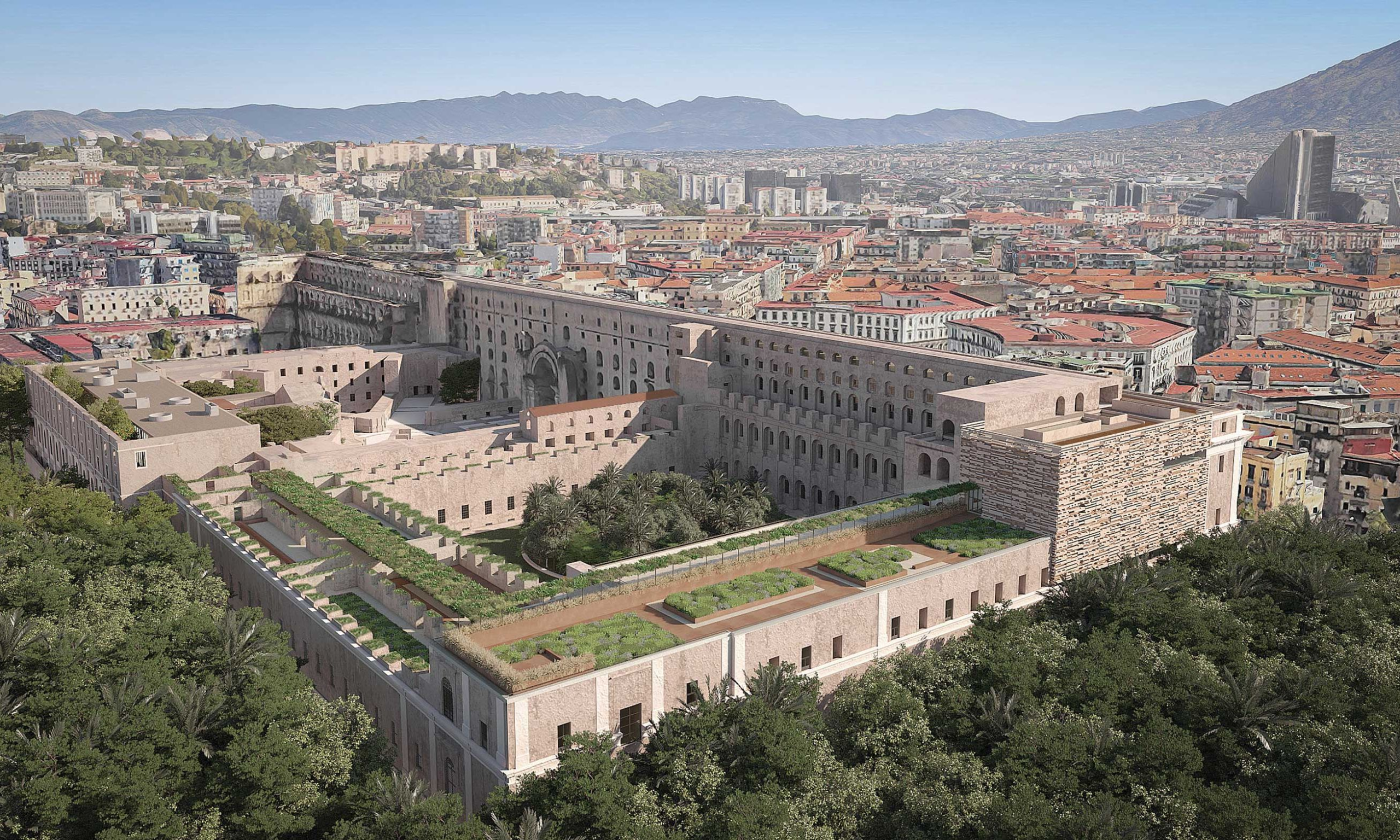The Albergo dei Poveri, one of Europe’s biggest historic buildings, will house the National Archaeological Museum of Naples and the city’s National Library, as well as university facilities
Photo: ABDR
Italy has begun work on what the government claims will be “the biggest cultural infrastructure in Europe”. Part of the newly renovated Albergo dei Poveri in Naples, once a vast hospital complex and almshouse that is now largely disused, will be used as a new space for the National Archaeological Museum of Naples (MANN) in what promises to be a bright spot in the city’s ongoing heritage renaissance.
The Albergo dei Poveri was commissioned by the Bourbon King Charles III, with construction work beginning in 1751 and definitively terminated 70 years before the original design had been fully built. The enormous complex was damaged in an earthquake in the 1980s and is now largely abandoned. With more than 100,000 sq. m of floor space, it remains one of Europe’s biggest historic buildings.
Around half of the site will be transformed into teaching spaces and student dormitories for Naples’s Federico II University, a new site for the city’s National Library and a 10,000 sq. m exhibition space for MANN. Italy’s government has provided a total of €147m for the project so far. Renovation work began in April and is due to be complete by the middle of 2026, Paolo Desideri, the head of ABDR architecture firm, which has designed the project, tells The Art Newspaper.
“Conducting a project on this scale has presented many problems,” Desideri says, adding that the new design would incorporate modern archaeological elements. “We have needed to draw on all of our creativity to resolve those problems.”
Return to a golden age
The new museum space will introduce visitors to life in the ancient city of Pompeii, the AD79 volcanic eruption that smothered it in pumice and the archaeological excavations from the 18th century onwards that led to its rediscovery. Exhibits will include artefacts from MANN’s collection that are at present in storage—including pieces of lapillus from the eruption, ancient statues, home furnishings, keys and bags of silver and gold—as well as video projections used to reconstruct the richly decorated interiors of ancient villas like the Temple of Isis and the House of the Citharist.
The Albergo dei Poveri is a testament to Naples’s cultural golden age in the 18th century, when its Bourbon monarchs drew the brightest composers, artists and philosophers from across the Italian peninsula while building imposing landmarks such as the Villa di Capodimonte, now a museum. While Naples began a slow decline following Italian unification in 1861, its stagnant local economy blighted by 21% unemployment today, its booming tourism economy has fuelled hopes for a bounce back. The city registers ten million overnight visitors annually today—up from less than four million in 2018—according to the ISTAT statistic agency.
Meanwhile, Italy’s culture minister, Gennaro Sangiuliano, himself a Neapolitan, has showered funds on the ambitious cultural heritage projects in his hometown. “Naples is a global cultural capital, because of its history and identity,” Sangiuliano declared at the opening of the Unesco Cultural Heritage in the 21st Century in Naples in November.
ABDR’s renovation plans for the Albergo dei Poveri will enable the National Archaeological Museum of Naples to showcase its Pompeii-related artefacts
Rendering: ABDR
The ministry provided €22.2m last September for the installation of 4,500 solar panels on the roof of the Capodimonte museum. (Private companies provided a further €25.5m.) In May, it announced further heritage projects worth €20m, including €1.5m for improving accessibility for disabled people to the Cloister of Oranges, a tourist attraction known for its tiled pillars and citrus trees, and €7m for renovating and restoring buildings including the Pinacoteca art museum.
Luigi De Falco, the president of the Naples section of the Italia Nostra heritage non-profit, said that existing renovation projects were making Naples “very attractive to tourists”. That, he added, was good for the local economy but risked pricing locals out. “We have 10,000 evictions a year,” De Falco says. “Residents must not be estranged, and that is why the government should make museum visits free to local residents.”

